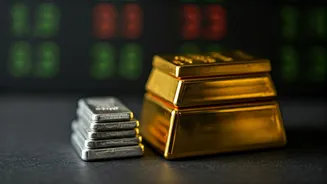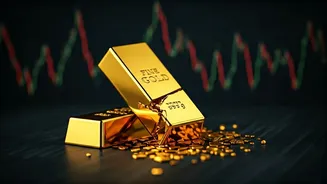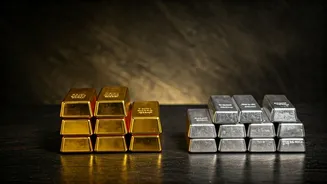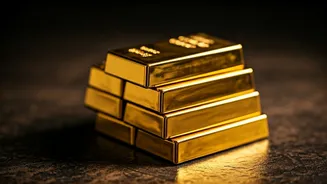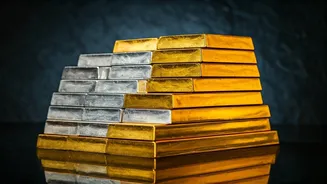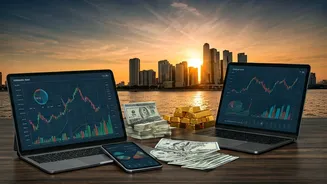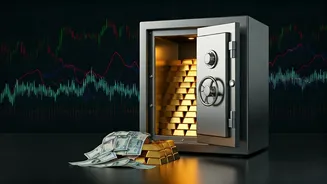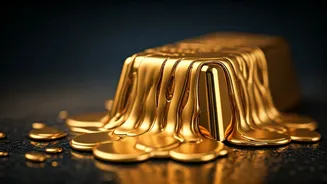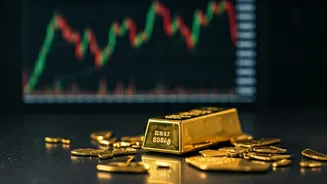Market Sentiment's Role
The performance of gold and silver, in the financial realm, is often seen as a reflection of overall investor confidence. When equities enjoy an upward
trend, the allure of precious metals as safe-haven assets may diminish, leading to a dip in their prices. As investors move towards assets that seem riskier yet offer potentially greater returns, such as stocks, the relative attractiveness of precious metals can wane. This movement suggests a broader picture, indicating how investors react to global economic signals. Developments in the equity market and the general mood of investors play a key role in dictating the direction of precious metals. The present downturn indicates that investors might be favoring other options, resulting in downward pressure on the prices of gold and silver. Consequently, the correlation between equity market performance and precious metal prices can be a crucial factor in understanding market dynamics and the behaviour of investors.
Equity Market Slowdown
The halt in the rally of the equity market served as a crucial catalyst for the recent decline in gold and silver prices. A period of consistent growth in equity markets often diminishes the demand for alternative investments like precious metals, as investors are inclined to allocate more capital toward assets deemed to provide higher returns. In the scenario where the equity market begins to slow down or shows signs of uncertainty, the appeal of precious metals can potentially revive, as investors move to safer investments. This shift is a direct response to the perception of risk in the market. The performance of the equity market has a deep impact on the demand dynamics of precious metals. The recent halt may signal a change in the economic outlook, resulting in fluctuations across financial markets. Analyzing the relationship between the equity market and precious metals is essential for understanding the complexities of financial markets and making informed investment decisions. This interplay affects investor strategies and asset allocation decisions.
Economic Indicators Influence
Economic indicators are another significant determinant in the valuation of precious metals. Data releases and financial news influence the market's perception of economic strength, which in turn affects the investment choices. Factors such as inflation rates, interest rate decisions by central banks, and overall economic growth projections can shape the sentiments of investors regarding the appeal of precious metals. For example, in an environment of increasing inflation, precious metals are often considered a hedge against the diminishing purchasing power of money, resulting in a rise in prices. Conversely, expectations of interest rate hikes might reduce the attractiveness of non-yielding assets, such as gold and silver. These considerations are vital when evaluating market performance. Investors keep an eye on these economic reports to adjust their strategies, and these indicators contribute to the fluctuations in precious metals prices. Understanding the influence of economic indicators is key to interpreting market movements and making informed choices.
Geopolitical Developments Impact
Geopolitical events can also significantly sway the prices of gold and silver. Global instability, political tensions, and conflicts often lead to an increase in the appeal of precious metals as safe-haven assets. In times of uncertainty, investors seek to safeguard their assets in commodities that have a solid history of maintaining value, which is particularly true for gold and silver. Such occurrences often lead to an upward trend in prices as a result of an increased demand. It highlights the importance of keeping an eye on global affairs and evaluating their influence on the financial sector. Furthermore, the precious metals sector is considered a barometer for global uncertainty. Changes in the geopolitical scene have a quick and frequently strong influence on investment strategies and market conditions. As a result, market participants must constantly stay updated on global developments to assess risks and opportunities. This knowledge helps them in making well-informed investment decisions.
